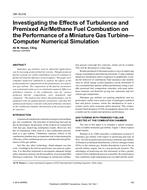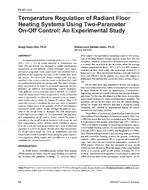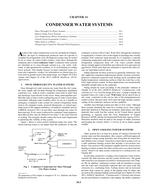The build-up of frost on unit cooler surfaces, if not periodically cleared, will eventually cause impairment of the unit’s performance, eventually rendering it useless.
Thus it is necessa~ in spaces below freezing, to provide an external supply of heat to warm the unit sufficiently to melt the frost and remove it. In large central-plant-type systems the most common method employed for supplying heat is from the high-pressure side of the refrigeration system, referred to as hot gas defrost.
Although the heat thus captured for use in melting frost would otherwise be rejected external to the system, the defrosting process is not free of cost. There are significant losses associated with the process the magnitude of which have not heretofore been fully identified.
This paper looks at the heat and mass transfer and fluid flow mechanisms involved in the hot gas defrost process in large commercial freezers. It suggests some mathematical models for analysis of the phenomenon and offers nomographs for estimating the resultant refrigeration loads and associated costs.
Citation: Symposium, ASHRAE Trans., vol. 95, pt. 2
Product Details
- Published:
- 1989
- Number of Pages:
- 6
- File Size:
- 1 file , 660 KB
- Product Code(s):
- D-28270


